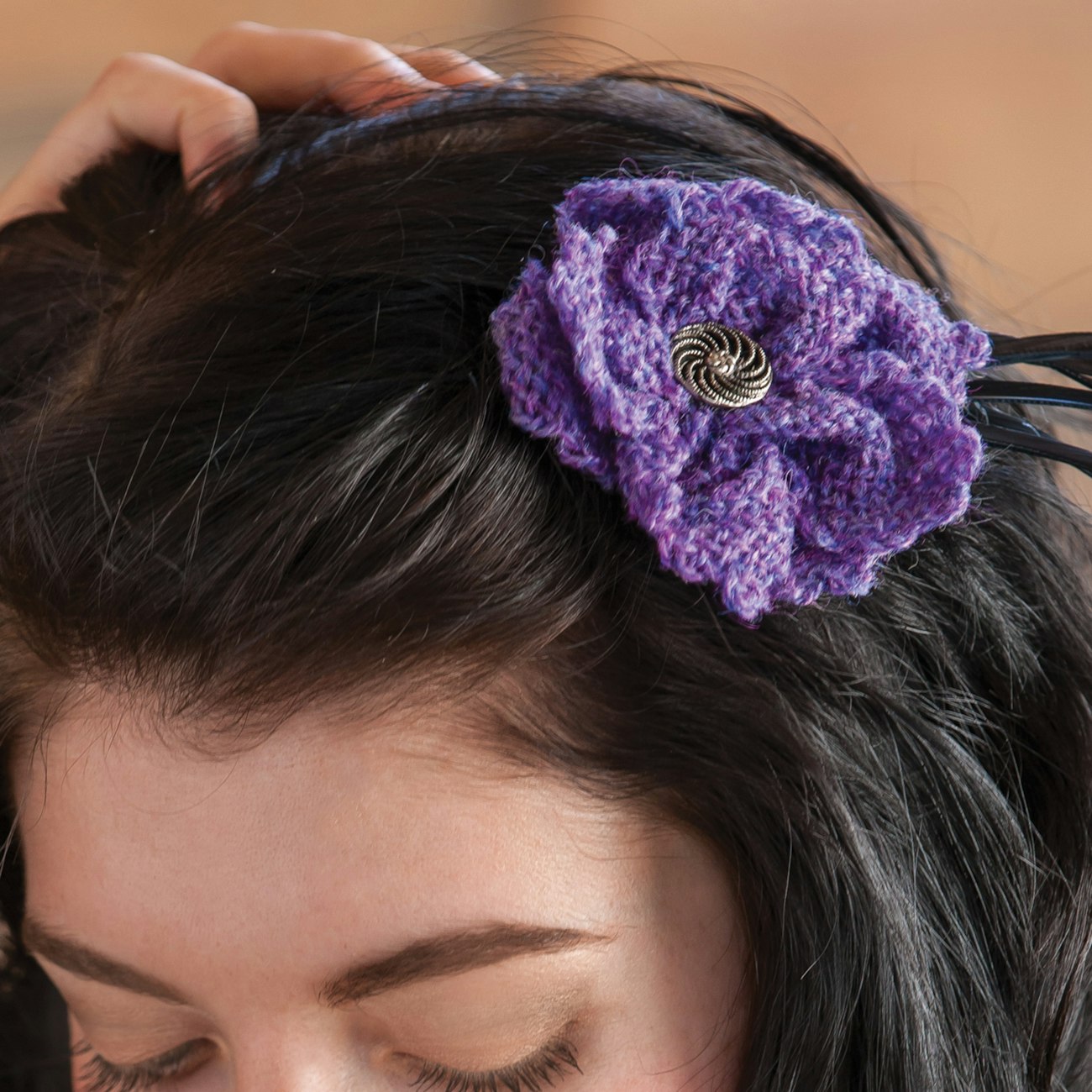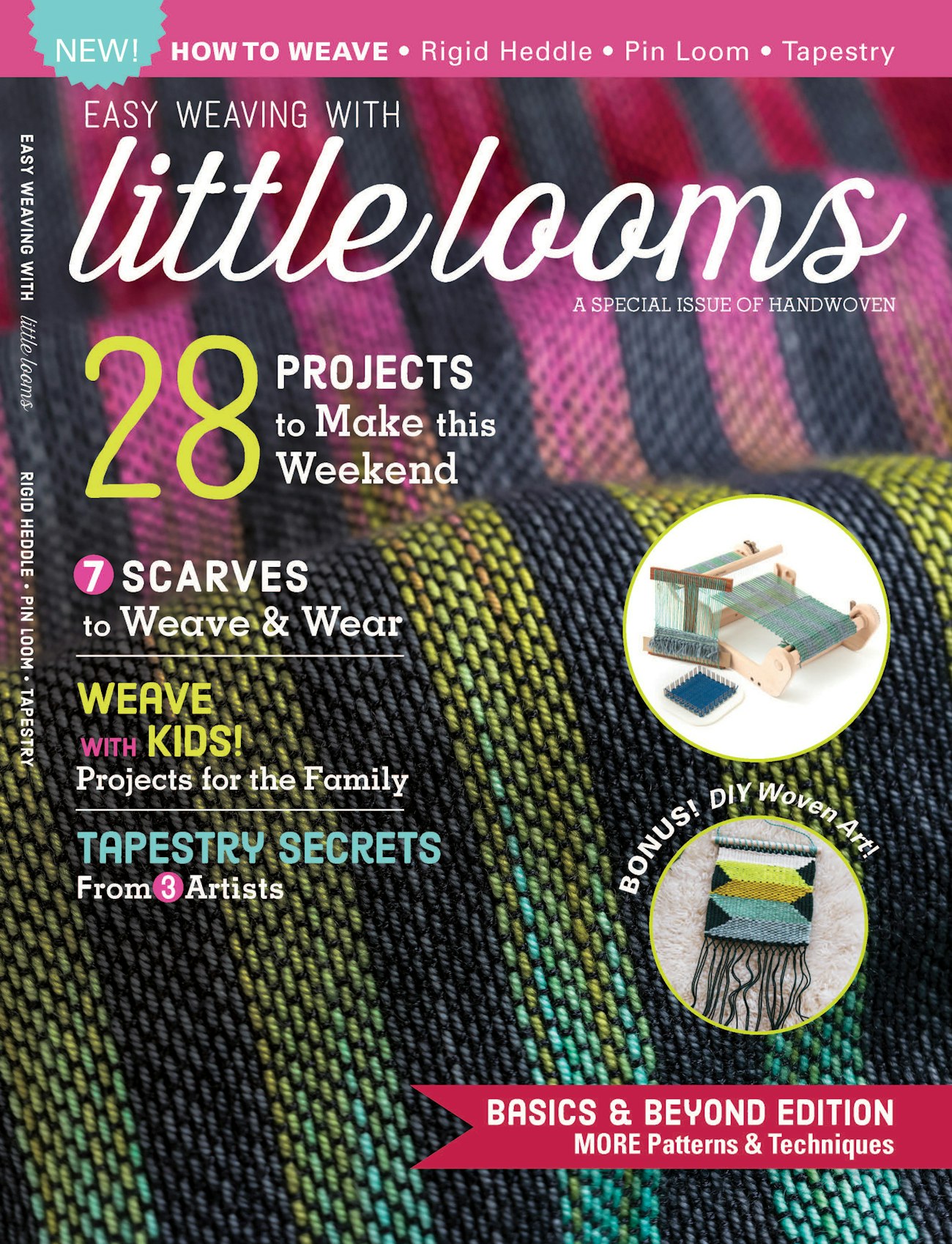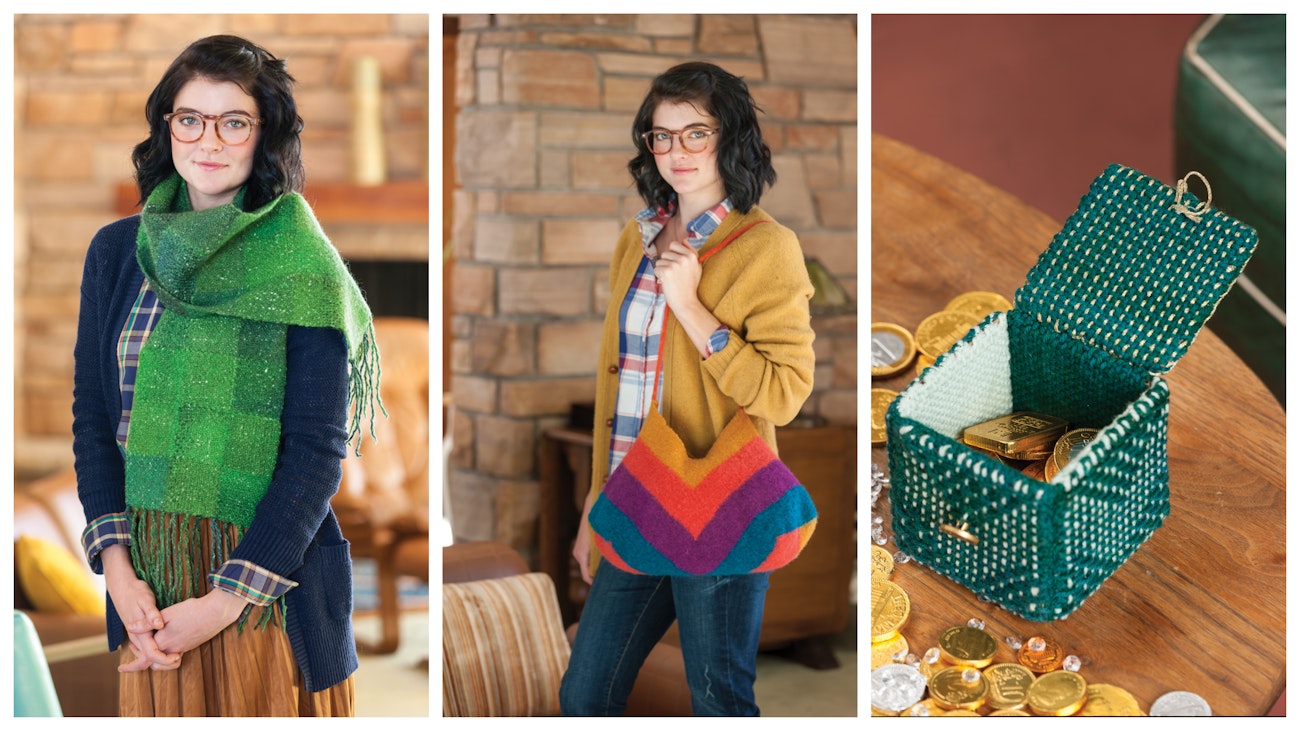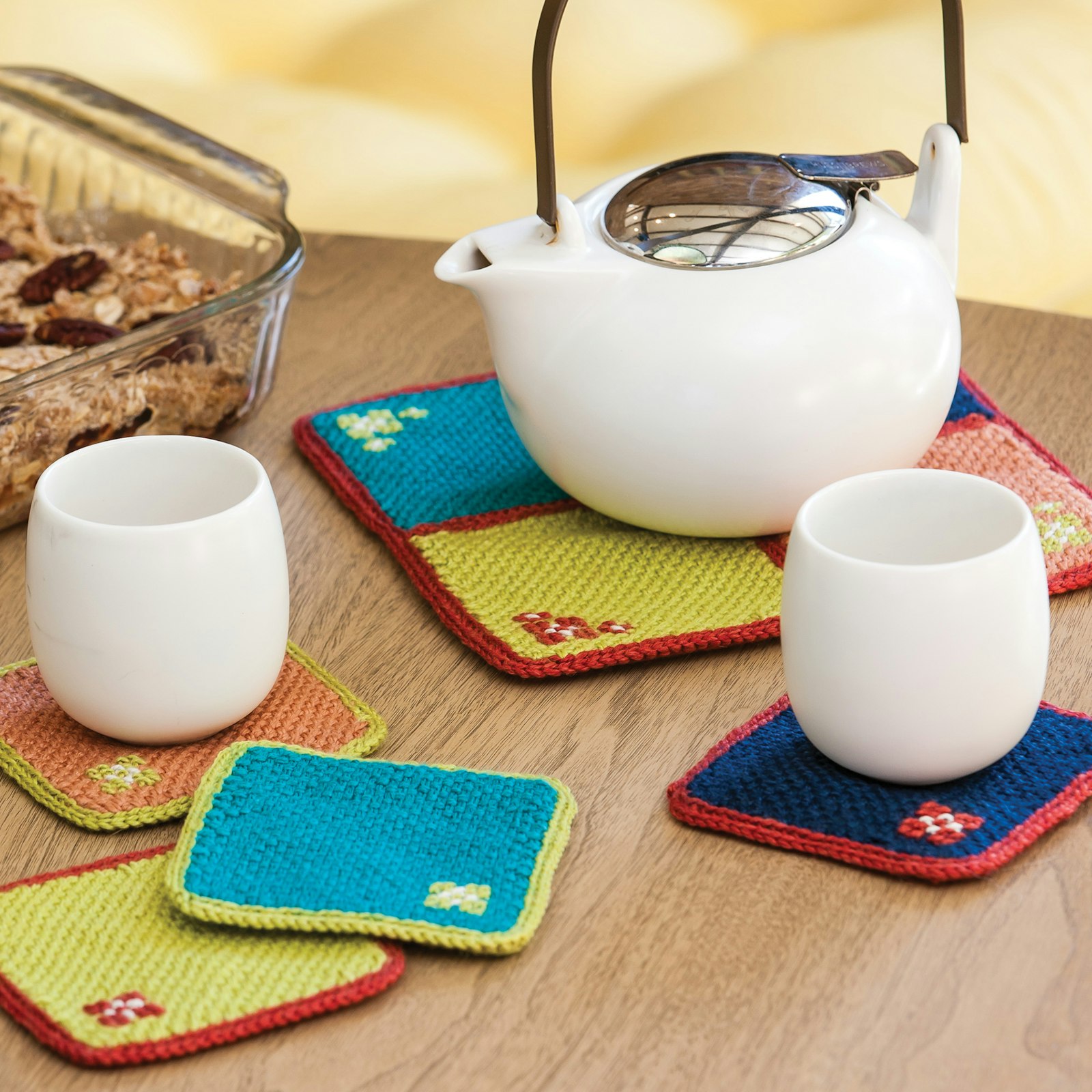Years ago when I found out we would be putting out a special issue of Handwoven devoted to little looms I was ecstatic! My first loom was a wonderful rigid-heddle loom, and I had started playing with pin-loom projects (learn how how you too can get started on a pin loom!). I had been weaving on small looms for years, and so the idea of working on a whole magazine with nothing but small-loom projects and articles sounded like fun!

Christina's "Flower Fascinator" from the first issue of Easy Weaving with Little Looms (2016)
At the time for my job at Handwoven I usually wrote articles, but I’d only ever woven one project for the magazine. I think this is because I like to have a level of spontaneity at the loom. Unless I’m weaving a wedding present (and sometimes not even then), I don’t weave two pieces the same—I am almost compelled to change the color or the pattern in some way. While I realize I could just weave one of something, if I’m taking the time to put on a warp, it seems a shame to spend all that time for one scarf or one towel.
The one project I did end up weaving for Handwoven? A set of pinwheel towels that were all the same color, but completely different patterns for our issue on designing at the loom—a perfect project for somebody who doesn’t want to look at the same fabric for more than an hour or two at a time.
Now what does this all have to do with_ Easy Weaving with Little Looms?_ While planning the first issue with editor Anne Merrow, we talked about the sorts of projects we wanted to see in the magazine, and I mentioned that a pin-loom flower hair adornment would be fun. Anne asked me if I wanted to design and weave the project, and, before I realized what I was doing, I said yes. After the meeting, I had to stop and think about why I so happily volunteered to weave the project and I realized it was because of how different weaving a project on a pin loom is from a floor loom.

Click to learn more about Easy Weaving with Little Looms (2016)!
On a floor loom, it’s my goal to warp once and that’s it. If I want to weave six towels, I better be able to do it on the one warp. I like warping, but I like weaving even more, so I like to get the most out of any warp I put on my loom. With pin loom projects, however, it took 20 minutes at most to go from blank loom to woven square. That’s it! I could experiment with different yarns and different combinations of yarn until I got a square with the right consistency. I could weave as many squares as I wanted to try different techniques with making flowers until it turned out just right. I could sample to my heart’s content and not get bored—it was absolute bliss!
In the end I wove a cute little flower fascinator that I’m proud of, and that I love wearing when I go out and about. I also fell even more in love with the pin loom and how freeing it is to weave on a loom that so easily allows for spontaneity and experimentation. I’m sorely tempted to weave up a more than a few of the pin loom projects from Easy Weaving with Little Looms 2016 and maybe even learn enough crochet so I can make a pin loom blanket—I could make each and every square different and it would be so much fun!

These cute pin loom projects and more can be found in Little Looms (2016). Left: Pin-Loom Patchwork Scarf" by Patricia Hokenson. Center: "Chevron Felted Bag" by Deborah Shelmidine. Right: "Treasure Box" by Deb Essen.
This is just one of the many reason I love weaving—there are an infinite number of different ways to combine warp and weft using different techniques, structures, and looms. If I want to take it slow and weave a project over a week, I’ll use one of my floor looms. If I want something that will take a day I’ll use my rigid-heddle loom. And if I want to have fun and make cloth right now, I’ll pick up my pin loom. Isn’t weaving grand?
Happy Weaving!
– Christina
Originally published September 29, 2016 Revised May 6, 2022

